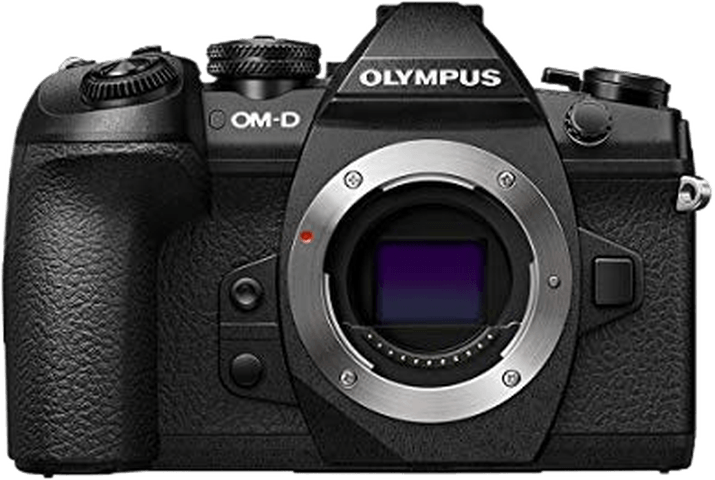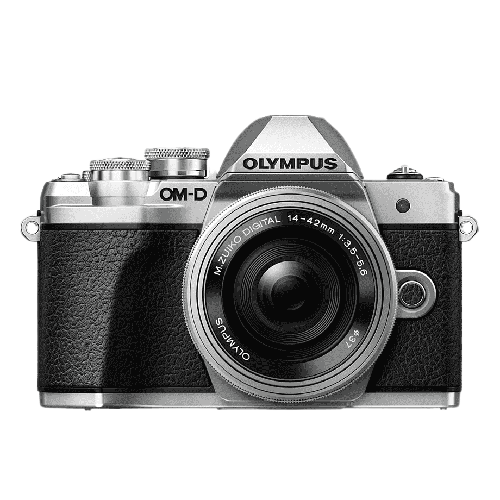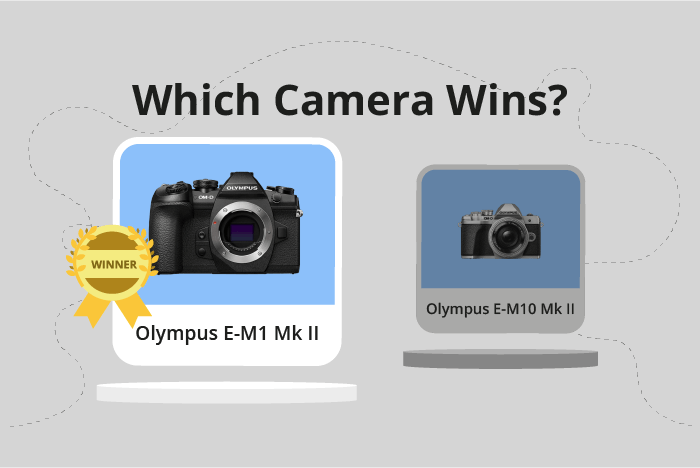Olympus OM-D E-M1 Mark II vs OM-D E-M10 Mark II Comparison
Olympus OM-D E-M1 Mark II

Olympus OM-D E-M10 Mark II

The Olympus OM-D E-M1 Mark II outperforms the OM-D E-M10 Mark II with a score of 68/100 compared to 54/100. Both cameras share similarities as mirrorless models, announced in 2016 and 2015 respectively. The E-M1 Mark II is larger, measuring 134 x 91 x 67mm, and heavier at 574g, while the E-M10 Mark II measures 120 x 83 x 47mm and weighs 390g.
The E-M1 Mark II’s higher score reflects its superior specifications, making it a better choice for professional photographers. However, the E-M10 Mark II has its advantages, such as being more affordable with a launch price of $650 compared to the E-M1 Mark II’s $2000 and its lighter weight, which is suitable for casual users.
Considering the specifications, the E-M1 Mark II is the better camera for professionals, while the E-M10 Mark II is more suitable for casual users seeking a budget-friendly and lighter option.
Olympus OM-D E-M1 Mark II vs OM-D E-M10 Mark II Overview and Optics
The Olympus OM-D E-M1 Mark II is the winner in this comparison of optics, with a score of 68/100, outperforming the Olympus OM-D E-M10 Mark II by 11 points, which has a score of 57/100. Both cameras share several specifications, including the CMOS sensor type, Micro Four Thirds sensor size, Micro 4/3 lens mount, and image stabilization.
The E-M1 Mark II has a higher resolution, with 20.4 megapixels compared to the E-M10 Mark II’s 16.1 megapixels. This results in clearer and more detailed images. Additionally, the E-M1 Mark II has a faster shooting speed of 60, which means it captures more frames per second, allowing for better action and sports photography. The E-M1 Mark II also has a superior processor, the TruePic VIII, which contributes to better image quality, performance, and noise reduction.
On the other hand, the E-M10 Mark II has a lower DXOMARK score for the sensor, with a score of 73 compared to the E-M1 Mark II’s score of 80. This means that the E-M1 Mark II has better overall image quality, dynamic range, and low-light performance. However, the E-M10 Mark II is still a capable camera with a decent sensor for its price range.
In this comparison, the Olympus OM-D E-M1 Mark II stands out as the better camera in terms of optics, with a higher resolution, faster shooting speed, and a better sensor. The E-M10 Mark II, while not as advanced, still offers a solid performance and is a good option for those on a budget.
Olympus OM-D E-M1 Mark II vs OM-D E-M10 Mark II Video Performance
The Olympus OM-D E-M1 Mark II and the Olympus OM-D E-M10 Mark II both have a video score of 70/100. They share some common specifications, including the built-in time-lapse functionality. However, there are differences in their video capabilities that set them apart.
The E-M1 Mark II has the advantage of a higher maximum video resolution, with 4K capabilities and dimensions of 4096 x 2160. This provides a significantly higher level of detail and clarity in the produced videos compared to the E-M10 Mark II, which has a maximum video resolution of Full HD and dimensions of 1920 x 1080. The E-M1 Mark II also offers a max video frame rate of 24fps, which is suitable for most videography needs.
On the other hand, the E-M10 Mark II has a higher maximum video frame rate of 60fps. This allows for smoother video playback and the potential for better slow-motion effects. However, this advantage is limited by its lower video resolution of Full HD, which may not be as visually impressive as the 4K resolution offered by the E-M1 Mark II.
In comparing the video capabilities of these two cameras, the E-M1 Mark II has the edge in terms of video resolution, providing better image quality and detail. The E-M10 Mark II, while offering a higher frame rate, is limited by its lower resolution. Therefore, for those prioritizing video quality and detail, the E-M1 Mark II would be the better choice. However, for users who value smoother video playback and slow-motion effects, the E-M10 Mark II may still be a viable option.
Olympus OM-D E-M1 Mark II vs OM-D E-M10 Mark II Features and Benefits
The Olympus OM-D E-M1 Mark II wins in the feature comparison with a score of 70/100, while the Olympus OM-D E-M10 Mark II scores 57/100. Both cameras share several specifications, including a 3-inch screen size, touchscreen capabilities, flip screen, no GPS, WIFI connectivity, and no Bluetooth.
The E-M1 Mark II is superior due to its higher feature score. This camera has a screen resolution of 1,037,000 dots, which is slightly higher than the E-M10 Mark II’s 1,040,000 dots. This difference in screen resolution provides the E-M1 Mark II with a marginally clearer and sharper display for reviewing images and navigating menus.
On the other hand, the E-M10 Mark II does not surpass the E-M1 Mark II in any specific feature. With a lower overall score, it is evident that the E-M10 Mark II does not offer any advantages over the E-M1 Mark II.
In conclusion, the Olympus OM-D E-M1 Mark II is the better camera in terms of features, with a higher score and a marginally better screen resolution. The Olympus OM-D E-M10 Mark II does not excel in any specific aspect compared to the E-M1 Mark II. Therefore, the E-M1 Mark II is the recommended choice for those prioritizing features in their camera selection.
Olympus OM-D E-M1 Mark II vs OM-D E-M10 Mark II Storage and Battery
The Olympus OM-D E-M1 Mark II outperforms the OM-D E-M10 Mark II in storage and battery with a score of 57/100 compared to 21/100. Both cameras share common specifications, accepting SD, SDHC, and SDXC memory cards, and lacking USB charging capabilities.
The E-M1 Mark II surpasses the E-M10 Mark II with two memory card slots, providing increased storage capacity and flexibility. Its battery life also exceeds the E-M10 Mark II, offering 440 shots compared to 320 shots, allowing for extended shooting sessions.
The E-M10 Mark II, however, does not possess any superior storage or battery specifications compared to the E-M1 Mark II.
Considering these factors, the Olympus OM-D E-M1 Mark II proves to be the better choice for photographers seeking greater storage and battery performance. The additional memory card slot and extended battery life contribute to its higher score and overall advantage in this category.
Olympus OM-D E-M1 Mark II vs OM-D E-M10 Mark II – Our Verdict
Are you still undecided about which camera is right for you? Have a look at these popular comparisons that feature the Olympus OM-D E-M1 Mark II or the Olympus OM-D E-M10 Mark II:

